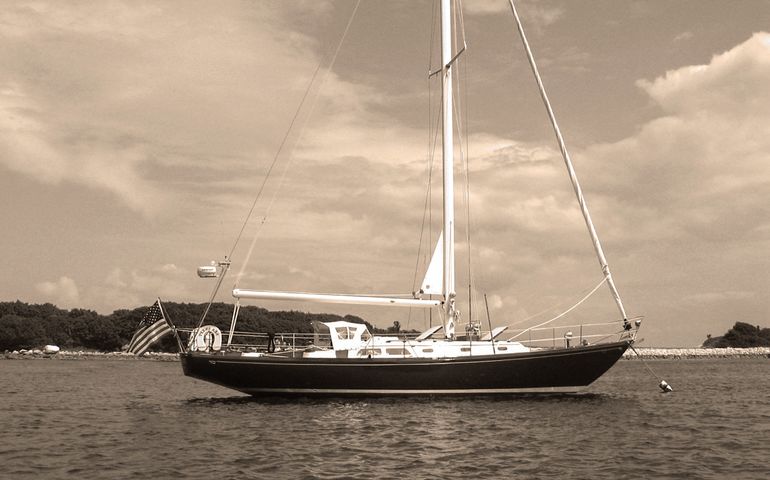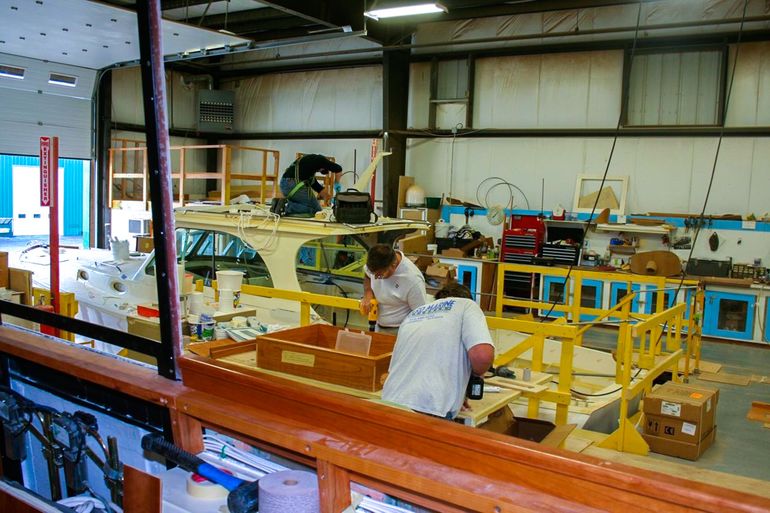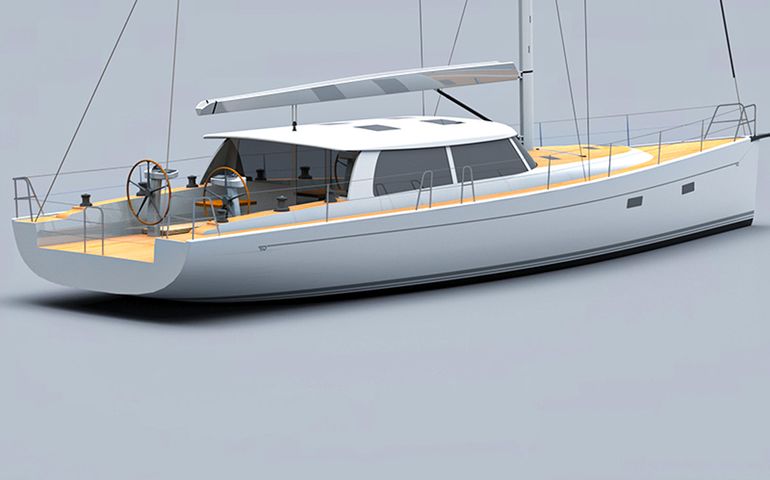Hinckley leads adoption of fiberglass for boatbuilding in the 1950s
When the Hinckley Co. was founded, in 1928 in Southwest Harbor, owner Henry Hinckley’s focus was on servicing the local lobster boats as well as the yachts of summer residents on Mount Desert Island.
He began building boats in 1933. They became known for beauty, speed and stamina. In the 1950s, Hinckley was one of the first boatbuilders to forego traditional wood-built hull in favor of fiberglass cloth and polyester resin, both developed in the 1930s and ‘40s.
Hinckley saw the potential for fiberglass to save weight while adding strength to his boats. Using a molding process, fiberglass offered faster and lower-cost repeatability of the same design, factors difficult to achieve in wooden boatbuilding.
In the 1960s, the material gained widespread notice from yachters when Hinckley commissioned noted naval architect William Tripp Jr. to design a cruising sailboat, known as the Bermuda 40, according to Soundings magazine. As Hinckley’s first fiberglass boat, it sold more than 200 over three decades.
The willingness to innovate later led the company to use carbon and Kevlar composite materials and a construction technique called vacuum-infusion to bond the material with epoxy resin. Other innovations include the development of precision controls and the integration of waterjet systems, which generate powerful jets of water to propel the boat and replace traditional propeller systems.













0 Comments